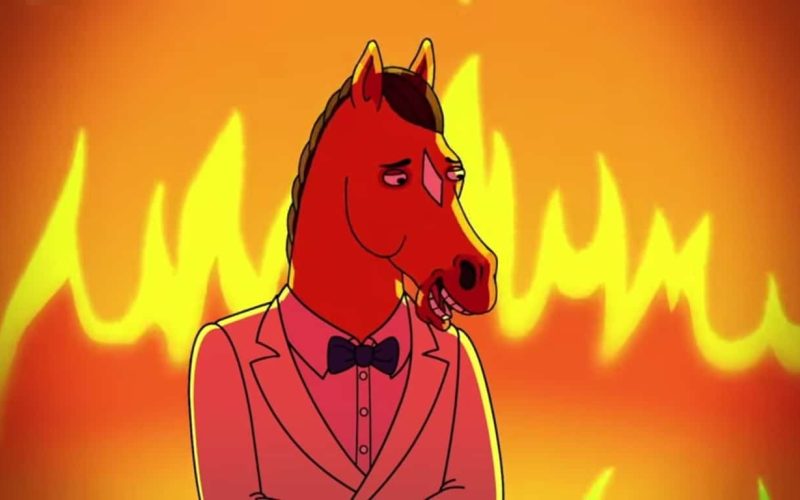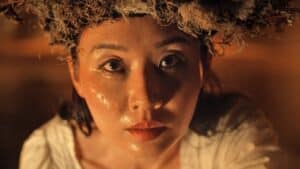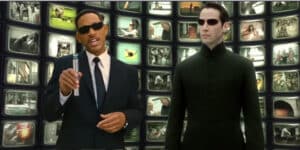Out of all the devastating moments in BoJack Horseman, none left viewers quite as wrecked as Season 4’s Time’s Arrow. Told from the dementia-riddled mind of Beatrice Horseman, the episode is a disorienting, heartbreaking trip through a lifetime of trauma, bitterness, and forgotten love. The BoJack Horseman Time’s Arrow episode doesn’t just explain how Beatrice became who she is—it forces us to see her, understand her, and maybe even pity her.
Summary
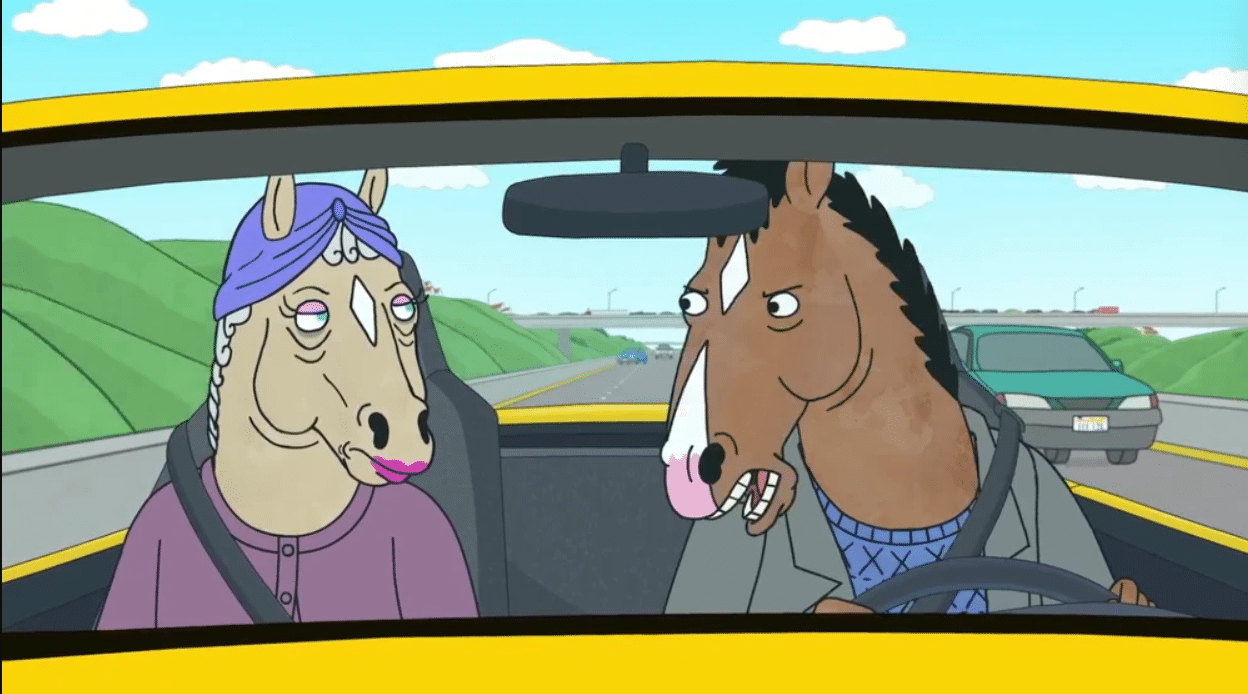
There’s no sugarcoating it—Time’s Arrow is one of the most emotionally brutal episodes in BoJack Horseman’s entire six-season run. Airing on September 8, 2017, as the eleventh episode of Season 4, this chapter doesn’t just peel back the layers of Beatrice Horseman’s past—it rips them apart and scatters the pieces. Told entirely through the disintegrating lens of dementia, this episode doesn’t follow logic or time. It follows trauma.
And it’s absolutely devastating.
What makes Time’s Arrow so unique is that BoJack, for once, isn’t the one in focus. Instead, we step into the fading memories of his mother, Beatrice—a woman we’ve come to know as cold, cruel, and painfully repressed. But inside her mind, fractured by age and regret, we see something different. We see where the rot began.
Episode Basics
-
Title: Time’s Arrow
-
Season: 4, Episode 11
-
Airdate: September 8, 2017
-
Written by: Kate Purdy
-
Directed by: Aaron Long
Plot Overview: Inside Beatrice’s Shattered Mind
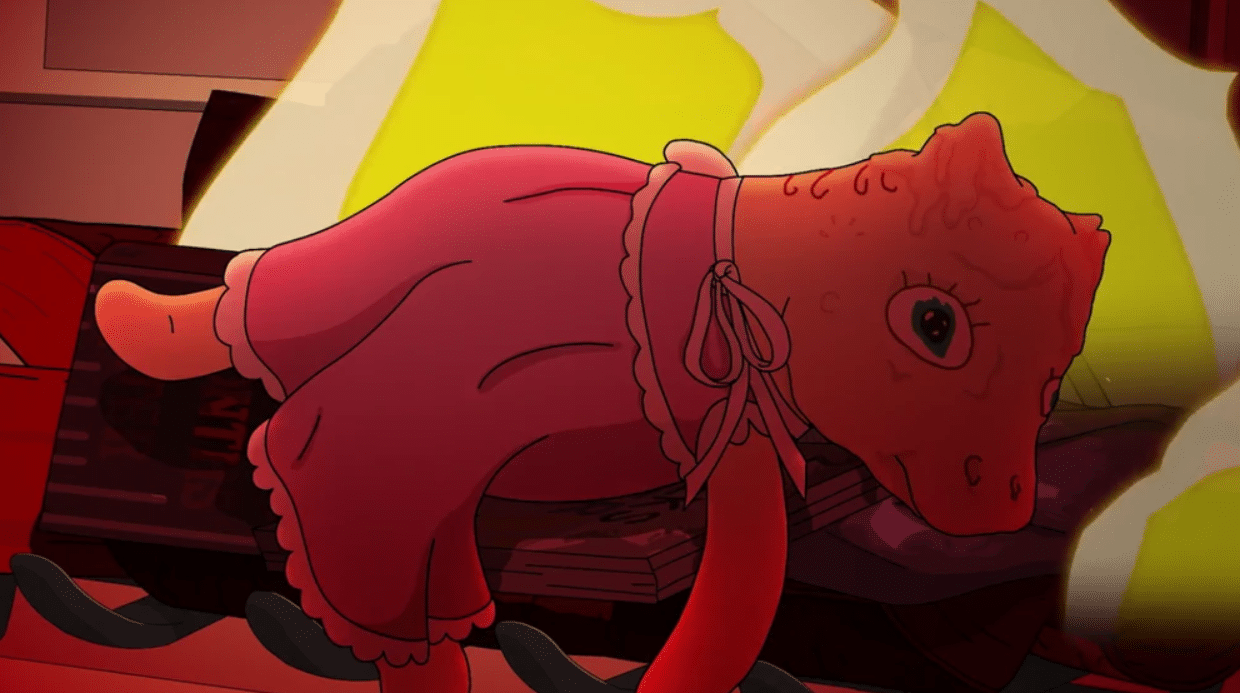
The episode opens with BoJack driving his mother to a low-rent nursing home, fuming after discovering she had secretly drugged Hollyhock with weight-loss pills. Beatrice, lost in her dementia, doesn’t recognize her son. She calls him “Henrietta.” BoJack snaps, trying to get through to her—but it’s no use. The past has swallowed her whole.
From there, the narrative collapses into dream logic. Settings glitch. Characters appear without faces. Time folds in on itself. We’re no longer watching BoJack Horseman—we’re floating through Beatrice’s memories, as they blur together in a surreal, emotional kaleidoscope.
We see her as a sick little girl being mocked for her weight. As a teenager with scarlet fever, she woke up to hear her father screaming at her lobotomized mother. We see her debutante ball in 1963, where she meets Butterscotch Horseman—a broke, boozy aspiring writer who crashes her party and charms her into defiance. They run away together. They have a baby. His name is BoJack.
But the fairy tale ends quickly. Butterscotch becomes bitter. Beatrice becomes broken. The baby cries, the novel doesn’t sell, and the California dream becomes a slow, sour grind.
Then comes Henrietta—the Horseman family’s maid. Young, kind, and painfully naive. She falls for Butterscotch. Becomes pregnant. And in one of the episode’s most haunting scenes, Beatrice—clinging to the last shred of power she has left—tells Henrietta she must give the baby up for adoption.
“Don’t throw away your dreams for this child… don’t let that man poison your life the way he did mine.”
It’s a plea. A confession. A warning. And it’s Beatrice, maybe for the first time, being honest.
And then we come to the present.
Confused and frightened, Beatrice asks BoJack where she is. This is the moment he’s been waiting for—the moment he can finally tell her off. Instead, he doesn’t.
He lies.
He tells her she’s at the lake house. That the fireflies are dancing. That her brother is playing piano. That she’s eating vanilla ice cream—something she was never allowed to have as a child.
“Can you taste the ice cream, Mom?”
“Oh, BoJack… it’s so… delicious.”
It’s the kindest thing he’s ever said to her. And maybe the last.
Visual Storytelling: Dementia Made Visible
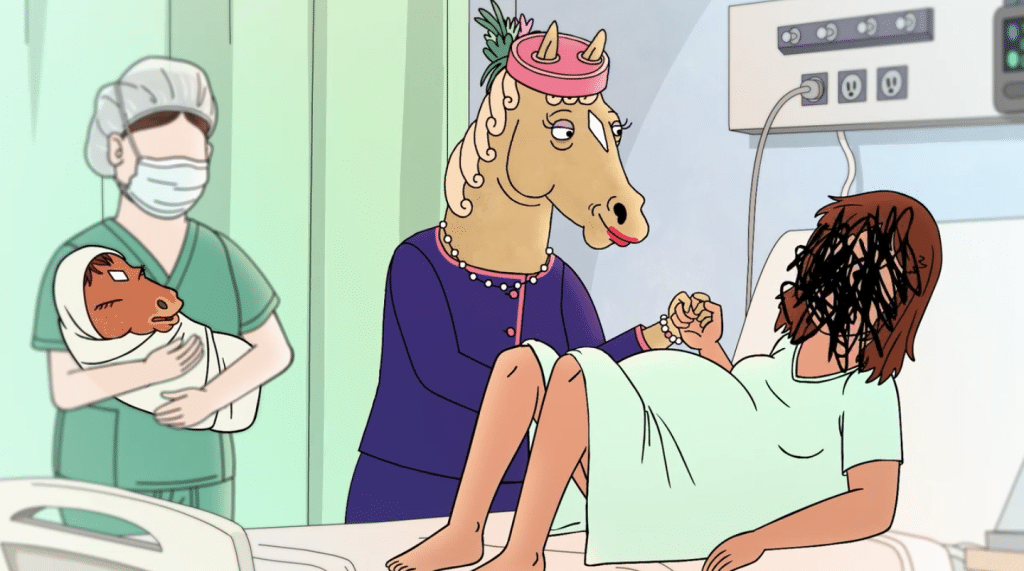
If Season 4 is BoJack at its most emotionally raw, Time’s Arrow is it at its most visually daring.
Beatrice can’t remember the characters because they are faceless. People she wants to forget—like Henrietta—have their faces violently scribbled out. Settings melt and warp, shifting mid-scene. Sometimes, the lighting changes. Sometimes, the signs change. Sometimes, her young self watches her old self in horror.
Memory here isn’t just unreliable—it’s haunted.
There’s one moment where young Beatrice, clutching her doll, begs her father not to burn it. She’s told her scarlet fever made everything she touched “infected.” The doll is thrown in the fire anyway.
That burned doll becomes the emotional core of this entire episode. When Beatrice tells Henrietta she can’t keep her baby—when she steals Hollyhock from her arms—it’s that same trauma playing out again. Only this time, Beatrice is the one throwing the doll into the fire. She’s become the monster she feared.
BoJack Horseman has always been about cycles—of pain, of addiction, of self-destruction. But Time’s Arrow is about the origin. The scar that started it all. It’s not meant to excuse Beatrice. It’s not an apology. It’s just context.
And it hurts like hell.
Analysis
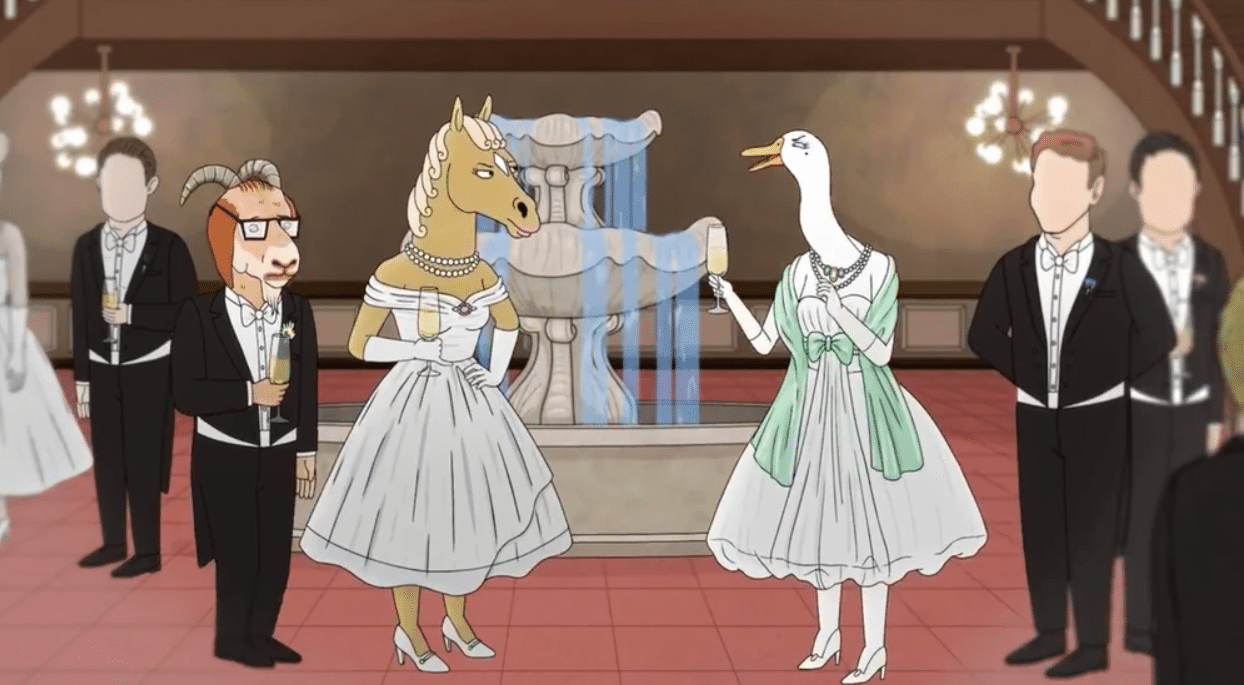
Unreliable Narrator as Art
What sets Time’s Arrow apart, even in a show known for its surrealism, is its relentless commitment to its central device: Beatrice’s fractured, failing memory. The entire episode filters reality through dementia—not as a gimmick, but as a storytelling necessity.
Time doesn’t just jump around—it stutters, rewinds, and dissolves. Background characters have no faces. Key figures, like Henrietta, are scribbled out entirely. Signs flicker and change mid-scene. Whole environments glitch, stretch, or collapse. And that’s the point: to show us what it feels like to lose your grip on reality.
The episode trusts its audience to follow the chaos, and in doing so, it transforms Beatrice into an unreliable narrator. Not because she’s lying, but because her mind is. Her memories aren’t just distorted—they’re weaponized. Against her. Against us. And through that, the episode pulls off something BoJack Horseman has never quite done before: it turns subjective truth into visual poetry.
Emotional Complexity
Here’s the real magic trick of Time’s Arrow: it makes you feel for Beatrice Horseman without ever forgiving her.
This is a woman who spent years emotionally abusing BoJack. Who blamed him for ruining her life? Who called him names, dismissed his pain, and drugged his daughter. And yet, by the end of this episode, you understand her. Not in a redemption arc sort of way. In a “this is how abuse replicates itself” sort of way.
Because when you trace Beatrice’s cruelty back far enough, you find Joseph Sugarman. You find Honey’s lobotomy. You find a burned doll in a fireplace and a little girl learning that love can be destroyed in the name of discipline. Time’s Arrow shows how trauma trickles down from parent to child like a toxic inheritance. Joseph damages Honey. Honey vanishes into grief. Joseph then molds Beatrice in his cold, callous image. And she, in turn, inflicts that same rigid repression on BoJack—who passes it on to Sarah Lynn and nearly to Hollyhock.
It’s a devastating lineage. And the show doesn’t flinch from it. It just holds it up to the light and says, “This is what happens when pain goes unchecked.”
Strong Performances
Let’s give credit where it’s due: Time’s Arrow doesn’t work without the performances. Wendie Malick, who has always brought a sharp edge to Beatrice, goes full range here. Her voice dips between maternal warmth, clipped cruelty, and aching vulnerability—sometimes all within a single scene. It’s the best performance of the season, maybe the series.
And then there’s Will Arnett. That final monologue? The one where BoJack paints a false memory of the lake house to comfort his dying mother? Quiet. Controlled. Shattering.
“We’re sitting on the back porch… the crickets are chirping, and the lake is still, and the night is full of stars…”
He doesn’t forgive her. He doesn’t have to. But at that moment, BoJack gives her something she never gave him: peace.
Final Thoughts
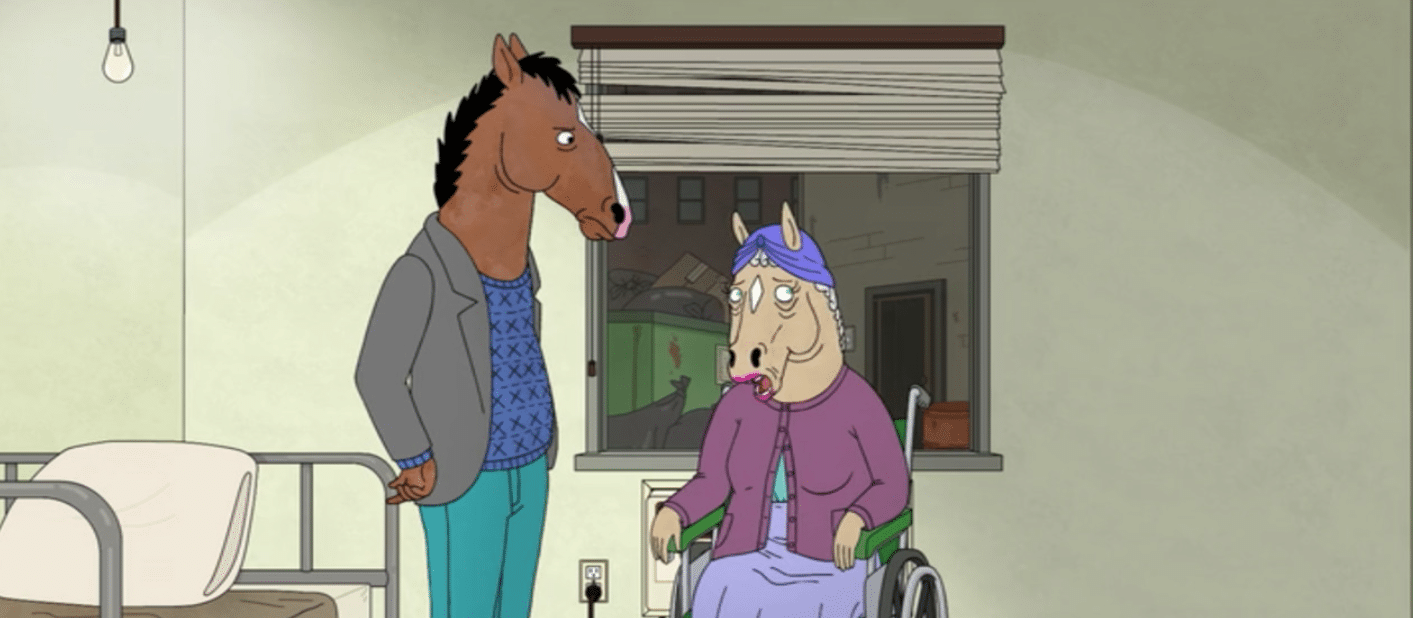
The BoJack Horseman episode Time’s Arrow isn’t just one of the best in the series—it’s one of the most ambitious, emotionally layered half-hours of animation ever aired. It digs into generational trauma with surgical precision, using fractured storytelling and haunting visuals to peel back the psychology of one of the show’s most reviled characters. And somehow, it finds humanity beneath all the bitterness.
Watch Time’s Arrow after The Old Sugarman Place for maximum emotional impact. The two episodes form a kind of tragic duet—one showing the pain of the past, the other how that pain persists. And if you’ve already seen the full series, rewatching this one hits differently. It reframes so many moments, especially with Hollyhock, and brings the show’s core themes—identity, memory, legacy—into sharper focus.
This isn’t just an episode about Beatrice. It’s about BoJack. It’s about us. About the stories we inherit and the ones we pass on.
And honestly? It might be the most quietly devastating episode in the whole series.

